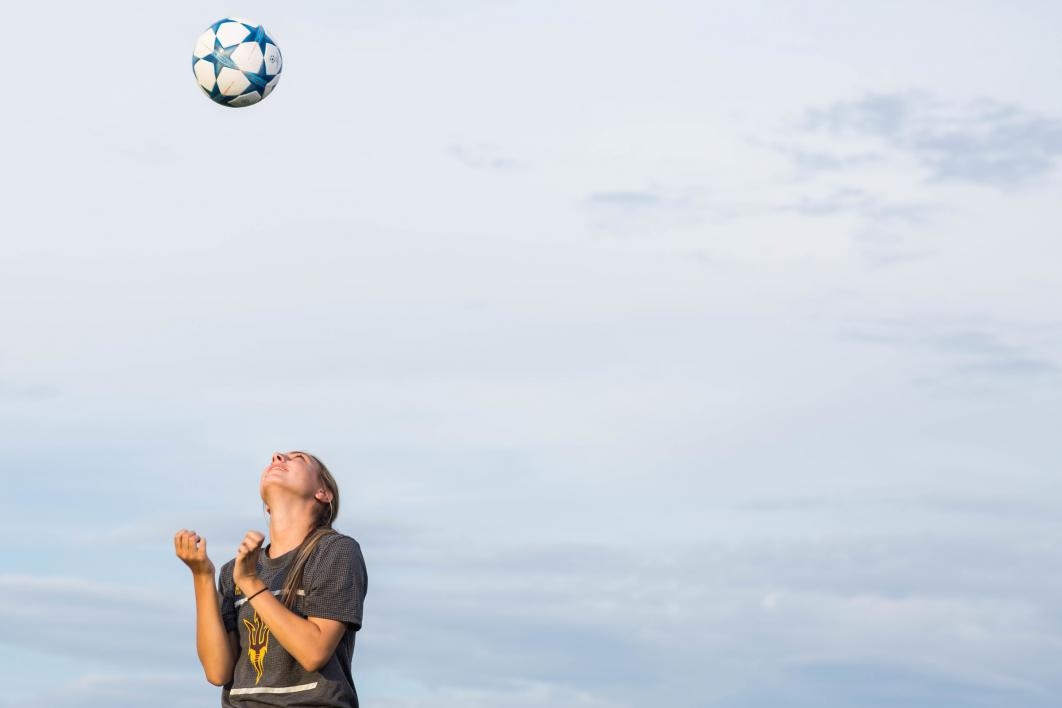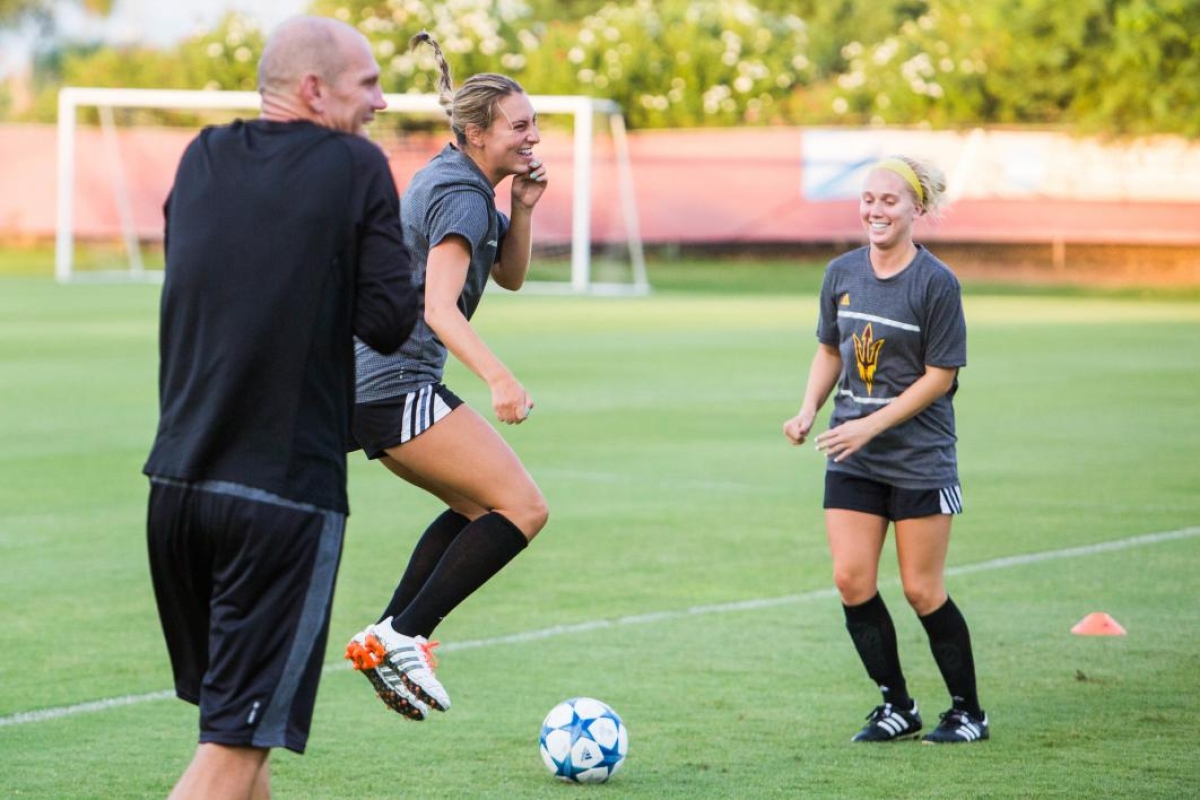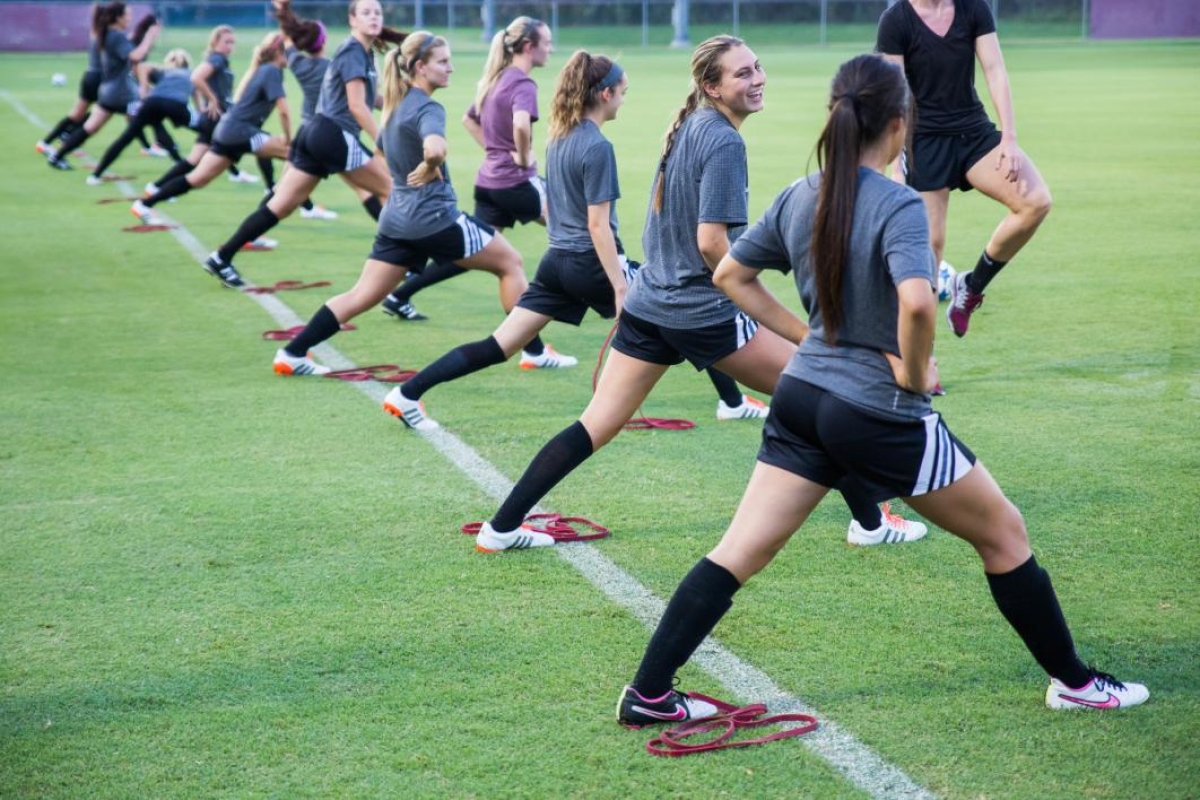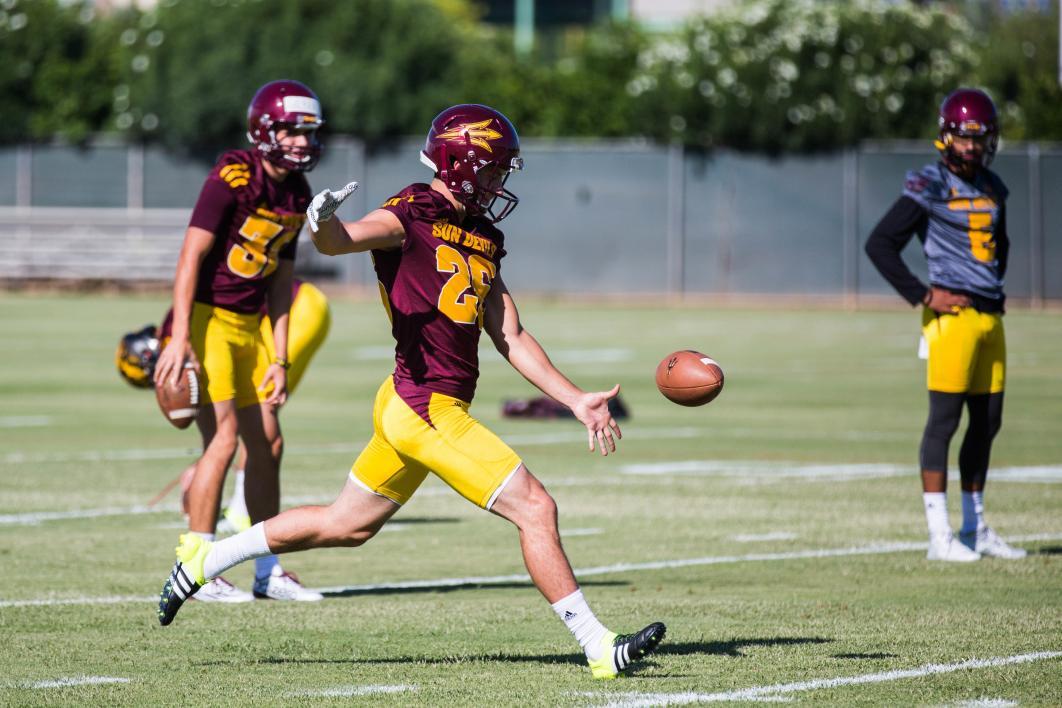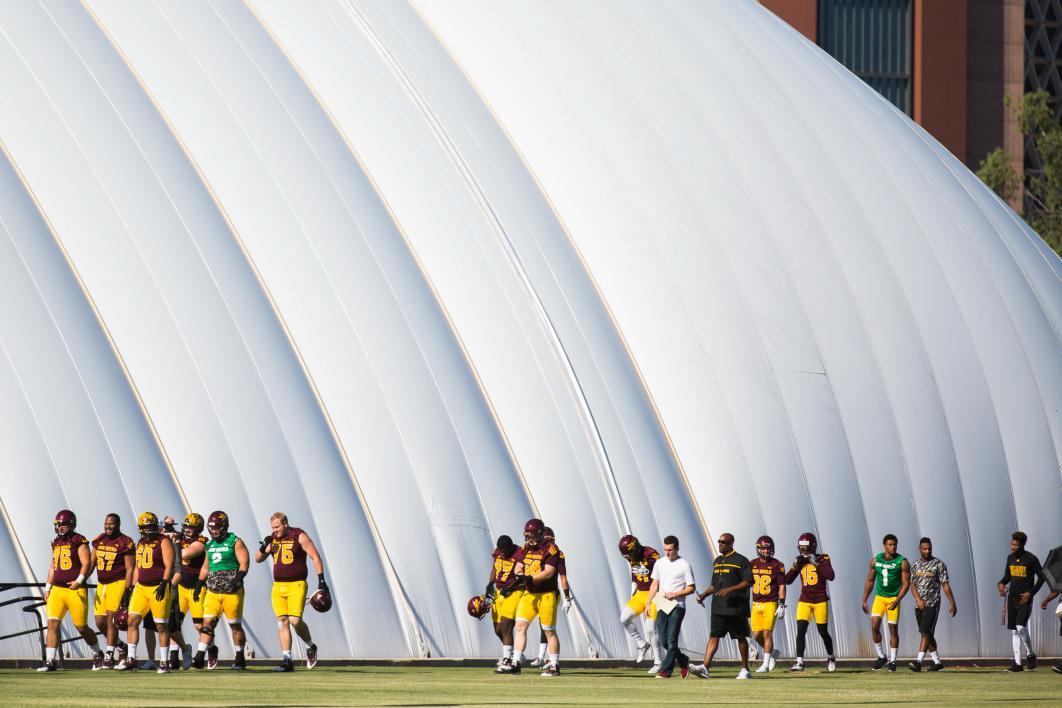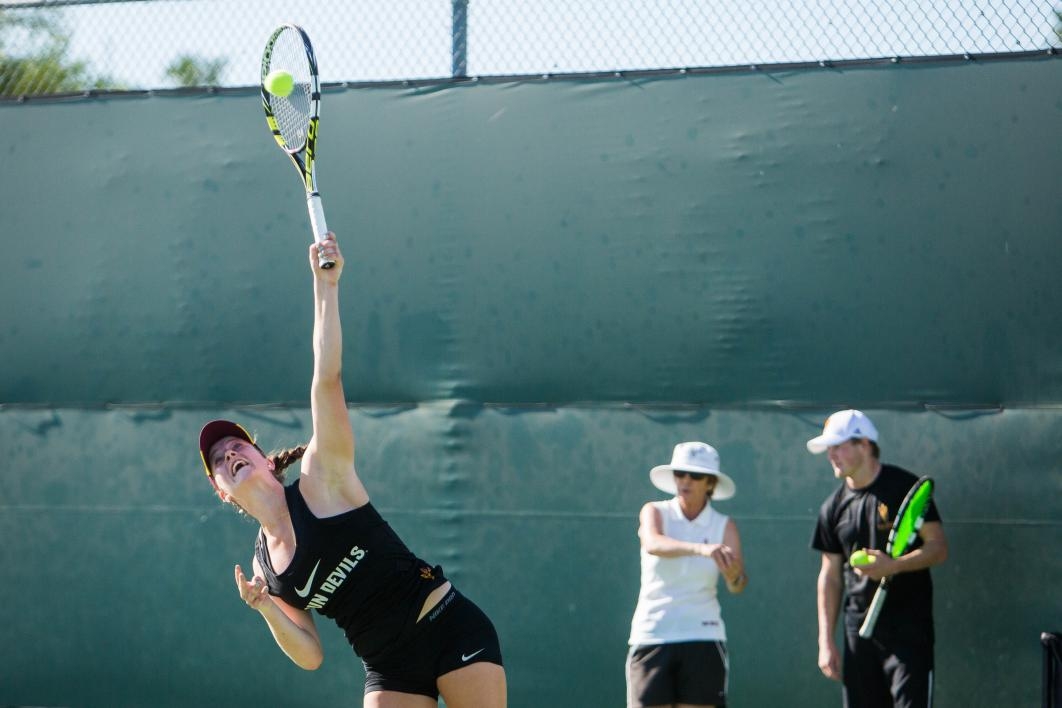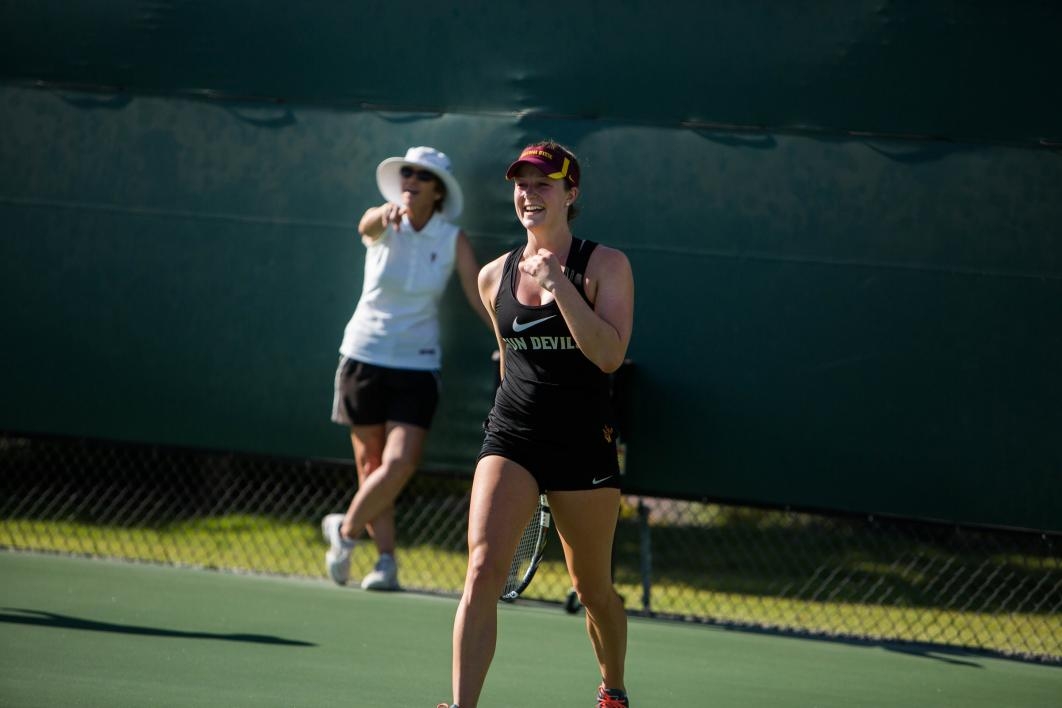Editor's note: This feature is part of a series profiling different slices of ASU's diverse population. Find more stories here.
Alexandra Osborne didn't sleep through her alarm once this summer.
She couldn't. A few minutes of extra sleep and her entire day would have been off.
The ASU tennis player's first obligation was a two-hour practice session that started at 7:30. From there, she had to report to her internship in ASU’s sports department for a bit, sit through a class, run home for a quick lunch, return to campus for another class and then end her day with a weight-lifting session.
Oh, and let’s not forget the nights filled with homework.
And this was just her summer schedule. The fall introduces a heavier class load and more time devoted to training. When the tennis season starts in the spring, add matches and interstate travel to the docket.
“It’s like we have a full-time job and we’re studying at the same time,” the junior business major said in her friendly, fluid Australian accent.
But “I made that choice. I knew I’d be busy. I like to be doing something, I’m a very active person.”
That last line might as well be the unofficial credo for ASU’s student-athletes, a collection of busy bodies whose days are planned down to the very minute in a grid of classes, sports responsibilities and the daily maintenance we all need — food, rest and, hopefully, some social interaction.
Ill-advised movies and TV shows have long programmed us to believe university-level student-athletes live like kings, with perks that include instant popularity, teachers who reward class enrollment with passing grades and the leisurely life of, well, royalty.
But talk to ASU’s many student-athletes, and they paint a picture that might shock lazy screenwriters.
“Last semester my day was 7:30 a.m. to 7:30 p.m. Non-stop. Monday through Friday,” said Tommi Goodman, a senior majoring in journalism who plays midfield on the soccer team. “It can get tiring at times, but I love it. I wouldn’t change anything.”
That’s another refrain heard from ASU’s student-athletes: They love this lifestyle.
Even if it means less time hanging out with peers, going to concerts or chilling while playing a video game for hours, they love the grind of trying to find success in the classroom and on the field — or court, track or rink.
There’s also less time for things like internships, a necessary ritual in the pathway to finding your dream job.
“If you’re serious, your social life is going to suffer,” Osborne said. “They get the weekends off, most students. That would be nice.”
Let’s be clear, though. She’s not asking for pity. Although there are sacrifices for committing to the student-athlete lifestyle, there are definite benefits; like networking for jobs after leaving ASU, planned study halls, tutoring for those who need it and the glory that comes from representing ASU in the athletic arena.
They also get to be part of a community that understands exactly what they’re going through.
“Being around other athletes … is good because you know other people are working, and to have it in your mind that other people are working when you might not be working makes you want to go more,” Osborne said. “It’s like, I should be grinding more.”
ASU junior and punter Matt Haack on the first day of Sun Devils football practice at Arizona State University in Tempe. Deanna Dent/ASU Now
Of course, this is coming from a tennis player, and echoed by a soccer player. Their sports are popular, but not to the level of glamour sports like football or men’s basketball. So what’s it like for those student-athletes who earn more time in the national spotlight?
“I think we’re treated like everyone else,” said Matt Haack, the punter for the Sun Devils football team. “Usually, you just blend in, that’s how I feel.”
Now, that might be easier for Haack — who stands 6 feet, 1 inch tall and weighs just under 200 pounds — than it is for his bigger brothers on the offensive line. Still, he has a point. ASU’s student-athletes say they don’t feel like they’re special or different from the rest of the student body. They’re simply students who spend a lot of time preparing for sports.
A lot of time.
Haack’s typical day during the fall semester starts at 6 a.m. for breakfast with the team — unless he’s recovering from an injury, when he’ll be in before 6 for therapy.
Afterwards, there are position and team meetings from 7 to 8. Practice at 8:30 until 11 or 11:30, followed by lunch. The afternoon is a slate of classes until 5 p.m. Then it’s dinner and time for homework — unless there are night classes.
“By the time you go to bed you’re dead,” he said. “A lot of people only see the 14, 15 Saturdays that we’re playing. But the workouts, the running, the practices, they’re tough, but I wouldn’t want to do it any other way. I don’t know what I’d do without it.”
Spoken like a typical Sun Devil student-athlete.
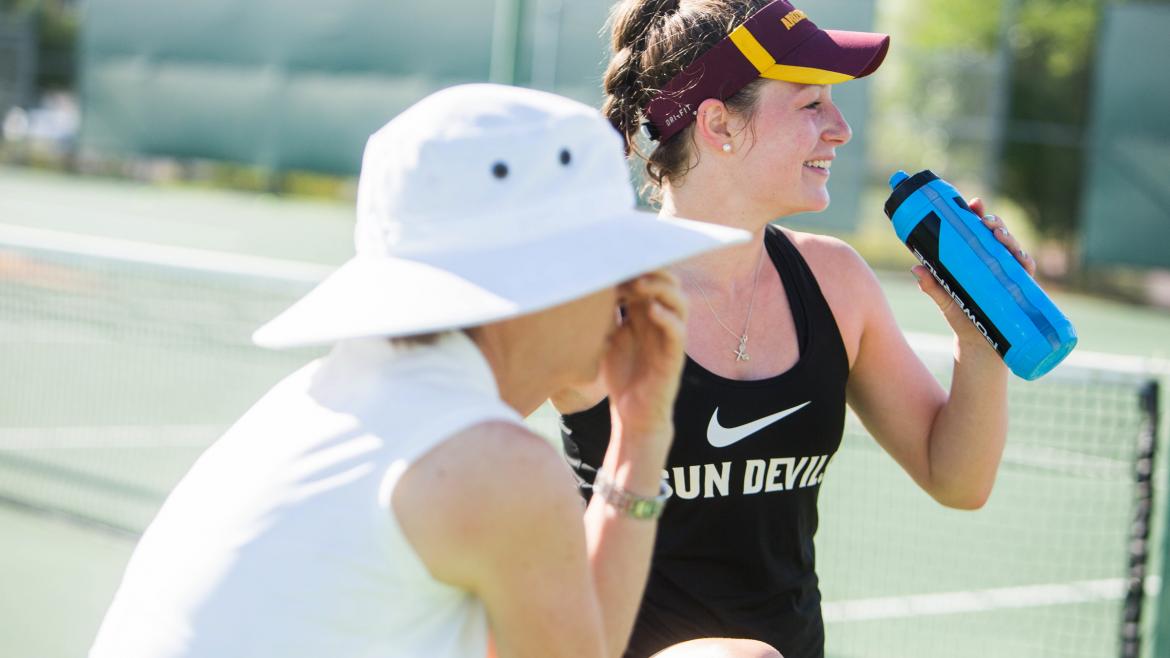
Arizona State University junior Alexandra Osborne takes a break during practice at the Whitman Tennis Center on July 30.
Deanna Dent/ASU Now
More Sun Devil community

ASU student, Navy vet pursues greener future in sustainability
As Arizona State University holds its annual Salute to Service celebration, honoring individuals who serve the nation and their communities, Shana Harly stands out for her commitment to both her…

No limits to a mother’s love, a wrestler’s determination
Judy Robles was washing dishes in the kitchen of her California home and keeping an eye on her young son, who was playing in the park that backed up to the house.She looked down for a second, maybe…

A symphony of service: Iraq War vet and ASU alum finds healing through music
At the age of 30 and only one credit away from obtaining his bachelor’s degree in piano performance, Jason Phillips could no longer stifle the feeling that he was stuck. He was teaching at a…


